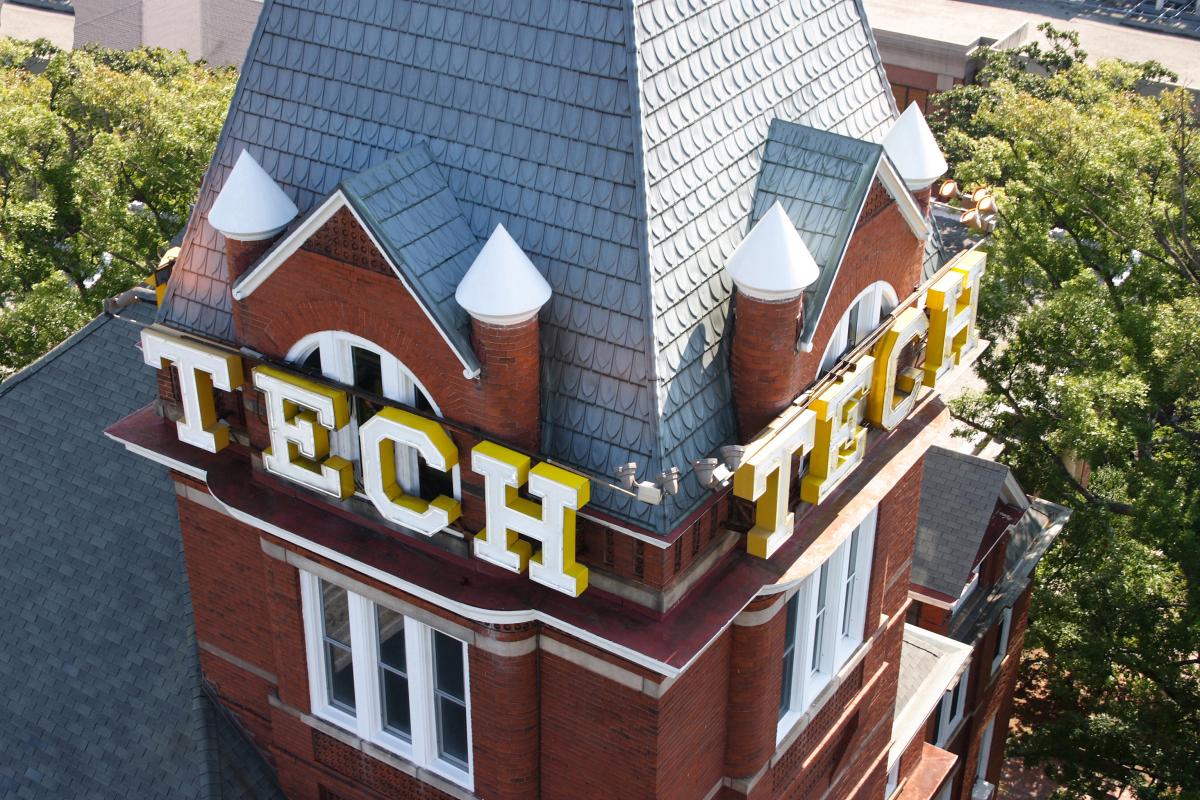
It’s not easy being a rollercoaster engineer.
You’ve got to consider the physics of features like loops, hills, and diagonal supports. Your ride will be judged on more creative merits, too, such as overall look and use of color.
But what if you’re a rollercoaster engineer and a kid?
More than 100 kids recently found out what it’s like to be both at the Georgia Tech Engineering Design Challenge, sponsored by GT’s Engineering Education Outreach (EEO) office. The event, held Feb. 11, brought together middle and high school students from schools around the metro Atlanta area to build their own coasters from construction paper. Students hailed from several counties and attended both public and private schools.
The Challenge was designed to highlight engineering principles, giving students the chance to put their math and science skills to use in a novel setting. Early in the day, the budding designers were placed in random groups with competitors from other schools. The teams of six, each representing a wide variety of ages, had to work together to design and build their roller coasters with basic materials like scissors, tape and markers.
By 12:30 p.m., the room was buzzing. Students were putting finishing touches on their projects, adding a bit of tape here or a staple there. Several teams drew their own versions of Buzz to use as decoration.
Teams were awarded points for key structural features such as loops and funnels, but creativity and fun counted, too. One team called their coaster the Joy Ride; another was dubbed The Aviator.
But make no mistake: These kids weren’t amateurs. Their coasters were both complex and operative -- teams demonstrated their projects’ functionality by sending marbles down them for a ride.
“They did a great job,” said Tia Jackson-Truitt, EEO program manager. She served as one of the competition’s judges.
The evaluation process itself was tough. Several judges, including a couple of GT engineering students, worked their way around the room and questioned each team about their rollercoaster.
A rubric detailed project criteria and point values. Teams could earn six points for ensuring marbles riding the coaster stayed on track, while design flourishes such as extra funnels or loops were worth several more points each. Students were also expected to discuss the physics behind their creations.
The three top-scoring groups were honored with prizes like T-shirts and water bottles. Each project was well done, but the group that created a coaster called Tech Drop came out on top.
It was a wonder to behold. Tech Drop’s builders first put together a detailed blueprint, and their final structure – boasting smooth loops and turns – came out nearly identical to the design plan.
Kevin Rodriguez, who is working toward a Ph.D. in chemical engineering at Tech, was another judge at the competition. As he assessed each of the roller coasters, he asked students how they came up with their design concepts.
“I like the creativity students brought to the competition,” he said.
When the Tech Drop team was announced as challenge winner, its members scurried to the front of the room to receive their prizes. Chatting and laughing, the students posed for pictures taken with cellphones, cameras and a tablet.
With big smiles, each team member proudly displayed their first-place swag: a Georgia Tech hoodie.